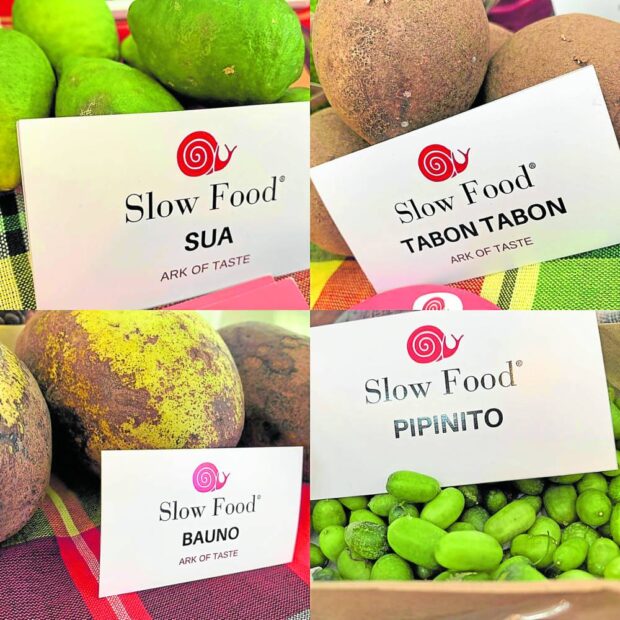Slow Food once again showcased Philippines’ local produce at the World Food Expo. This annual event provides an opportunity to raise awareness about Slow Food, a global grassroots organization dedicated to preserving local and indigenous fruits, as well as local food cultures and traditions. With a presence in over 160 countries, the movement advocates for access to good, clean, and fair food.
At the World Food Expo, Chit Juan from the Slow Food Movement educated attendees about unique local fruits such as sua, bauno, langkawas, batwan, pili, kulo, alibangbang, pipinito, and tabon tabon. How many of these fruits are you familiar with? The Slow Food Movement catalogs these fruits and provides detailed information about each one.
For example, let’s take a closer look at batwan. This wild tree, known as Garcinia binucao, grows in the forests of Panay and Negros Islands, reaching a height of 15 to 20 meters. During the wet season, batwan bears fruits abundantly, which are then collected for personal use or sale in the market. A productive tree can yield 50 to 100 kilograms of fruits in six months. There are two types of batwan, one with a thin skin and the other with a thickened skin and flesh. These round fruits, 4 to 5 cm in diameter, contain four to six seeds and turn yellow when ripe. They have a sour taste, perfect for souring soups like sinigang, a dish unique to the Ilonggo cuisine. Batwan can also be used in other dishes like paksiw and preserved with salt as an appetizer.
Aside from providing descriptions, the Slow Food Movement also identifies the state, region, and production area of each fruit. For example, batwan is found in the Philippines, Region VI, specifically in Negros and Panay Islands. It is considered an indigenous fruit among the Ilonggo community.
During the World Food Expo, the Slow Food Movement also showcased other local culinary traditions. They highlighted Davao’s langkawas, Sulu’s bauno, as well as Bicol’s pili and libas. Demonstrations were also conducted to showcase quesillo (Cavite white cheese), tilbok (a snack made from rice flour and coconut), and heirloom recipes made from labong (bamboo shoots).
It is evident that there are countless more fruits, recipes, and culinary traditions to be documented and preserved. Every household should join this movement, not necessarily in a formal way, but by embracing and incorporating the practice of appreciating locally grown produce and preserving the culinary traditions passed down by our ancestors.
Your subscription could not be saved. Please try again.
Your subscription has been successful.
Read Next
Don’t miss out on the latest news and information. Subscribe to INQUIRER PLUS to get access to The Philippine Daily Inquirer & other 70+ titles, share up to 5 gadgets, listen to the news, download as early as 4am & share articles on social media. Call 896 6000.
For feedback, complaints, or inquiries, contact us.
Denial of responsibility! SamacharCentrl is an automatic aggregator of Global media. In each content, the hyperlink to the primary source is specified. All trademarks belong to their rightful owners, and all materials to their authors. For any complaint, please reach us at – [email protected]. We will take necessary action within 24 hours.

Omprakash Tiwary is a business writer who delves into the intricacies of the corporate world. With a focus on finance and economic landscape. He offers readers valuable insights into market trends, entrepreneurship, and economic developments.


